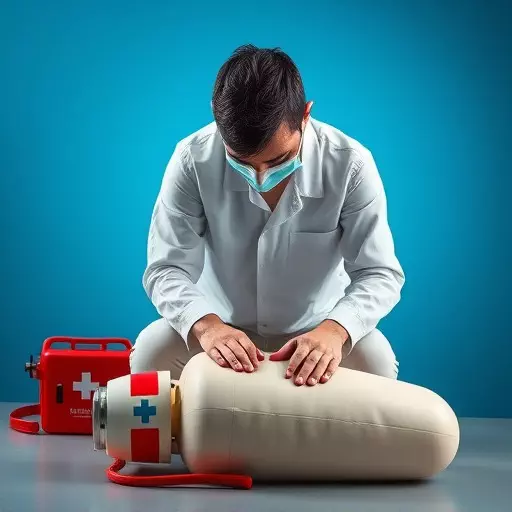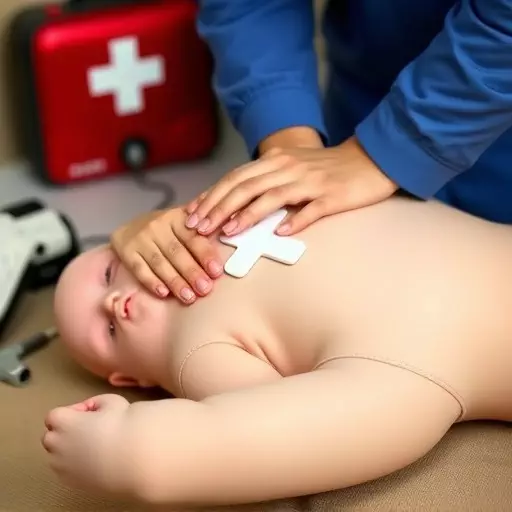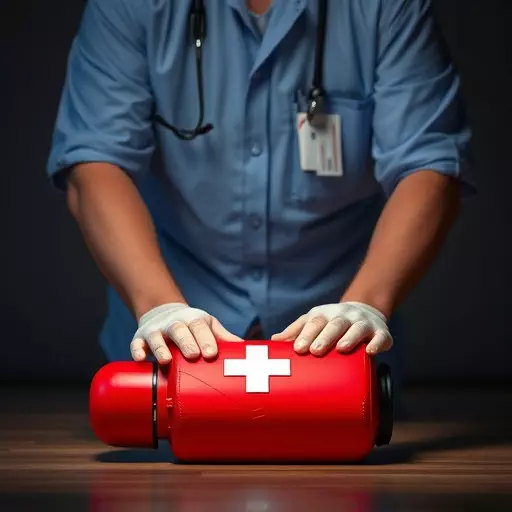Chemical burns require immediate action, including moving the victim away from the source and identifying the corrosive substance. Basic Life Support (BLS) involves controlling bleeding and seeking medical help promptly, especially for severe cases or caustic substances. Proper post-care includes monitoring for infection signs and supporting patient well-being through rest, hydration, and nutrition. Adhering to safety protocols, wearing protective gear, ensuring proper ventilation, and obtaining BLS training with recognized first aid certification is crucial for preventing chemical burns and maintaining safety in various environments.
“Chemical burns can be severe and life-threatening, making it crucial for individuals to understand the basics of first aid. This comprehensive guide delves into the world of chemical burns, exploring their causes, types, and immediate actions required. From basic life support techniques to post-care strategies, learn how to manage these incidents effectively. Understanding first aid and CPR training, including basic life support certification requirements, empowers individuals to respond promptly and ensure better outcomes. Equip yourself with the knowledge to navigate these emergencies.”
- Understanding Chemical Burns: Causes and Types
- Immediate Actions: What to Do When Someone Suffered a Chemical Burn
- Assessing the Situation: Basic Life Support for Chemical Burns
- First Aid Treatment: Soothing and Protecting Affected Areas
- Post-Care and Prevention: Recovery, Certification, and Safety Measures
Understanding Chemical Burns: Causes and Types

Chemical burns can be a serious concern, often occurring due to exposure to corrosive substances like acids or bases. These burns are classified as either acute, from a single intense exposure, or chronic, resulting from prolonged low-level contact. They can affect the skin, eyes, and even internal organs, depending on the substance involved and the duration of contact.
Understanding the nature of chemical burns is crucial for anyone with basic life support training, especially those who hold first aid and CPR certifications. Different chemicals have varying levels of severity and require specific first aid measures. For instance, strong acids can cause deep burns and tissue damage, while some bases may lead to less visible but equally harmful effects on the skin’s surface. Knowing the causes and types is essential for meeting first aid certification requirements and effectively managing chemical burn emergencies.
Immediate Actions: What to Do When Someone Suffered a Chemical Burn

Assessing the Situation: Basic Life Support for Chemical Burns

When dealing with chemical burns, assessing the situation is crucial for providing effective first aid and basic life support (BLS). The first step is to ensure the victim’s safety by moving them away from the source of exposure if possible, as this prevents further contamination. It’s important to note that different chemicals have varying effects on the body, so identifying the substance involved can help guide treatment decisions.
Basic Life Support for chemical burns involves several key steps. These include controlling any bleeding with direct pressure and seeking medical attention immediately, especially for severe cases or when dealing with caustic substances. First aid and CPR training, along with basic life support certification, equip individuals to manage such emergencies effectively until professional help arrives. Understanding first aid protocols and the specific requirements for first aid certification can make all the difference in managing chemical burns and potentially saving lives.
First Aid Treatment: Soothing and Protecting Affected Areas

Post-Care and Prevention: Recovery, Certification, and Safety Measures

After initial treatment for a chemical burn, proper post-care is essential for recovery. Individuals with first aid and CPR training should monitor the affected area for signs of infection, such as redness, swelling, or discharge. If an infection develops, medical attention is necessary to prevent further complications. Additionally, supporting the patient’s overall well-being through rest, hydration, and a balanced diet aids in the healing process.
Preventing chemical burns requires adhering to safety measures and obtaining first aid certification. This includes wearing protective gear when handling hazardous substances and ensuring proper ventilation. Regular training in basic life support (BLS) and first aid equip individuals with the skills to respond effectively in case of an emergency, thereby reducing the severity of potential burns. Meeting the first aid certification requirements is crucial for maintaining safety in various settings, from homes to industrial sites.
